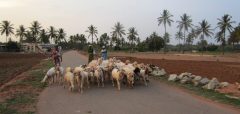It remains a big question that, while India’s 60% of population depends on farming as main source of income, how has public investment helped its primary stakeholders? Innovation and technological advancements in any sector are considered to be elevating economic and social status of its end users. Ironically, this is not entirely the case with agrarian sector in India; specifically with respect to small holders, millions in number. Although, there is no comprehensive analysis of efficiency or of net benefit from public investments (both material and non-material); an imperfect picture is emerging from stories we covered in the last series “Voices from the Margins“.
Looking back, innovation and technological advancement in agriculture wasn’t that recent in our country. With almost a century old large scale irrigation projects, huge tracts of land are under irrigated cultivation, though lesser than many similar countries. Then came green revolution with its magic of seeds and inputs, making this country as a whole, self-sufficient in food’ or calories. Later, it was modern technology in the form of implements and machinery that supposedly made farmer’s work easier. No doubt, all these efforts could uplift farmer’s social and economic status in some pockets. However, the core question of whether innovations were introduced in the right place and at the right time remains. Also the appropriateness of implementation process itself. They point towards the nature of impacts of innovations on small farmers that is sparsely explored.
The series – ‘Rear-view Mirror’ – brings together stories on certain schemes and programs for farmers. They will unveil lesser heard realities in small scale agriculture around introduction of irrigation, improved seeds, synthetic inputs and machinery .
Following is the first story in this second series. it is about a canal irrigation scheme and subsequent introduction of an improved variety of seed in the northern part of Karnataka state.


